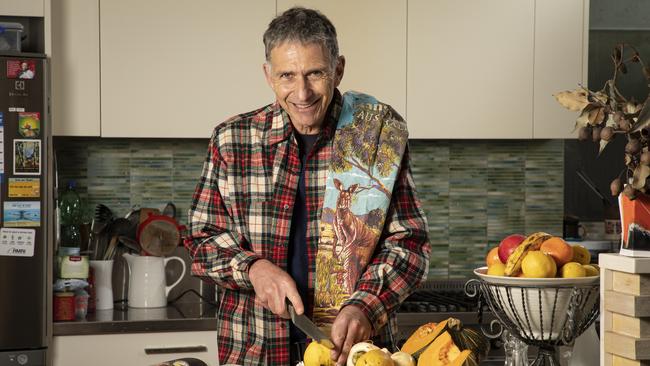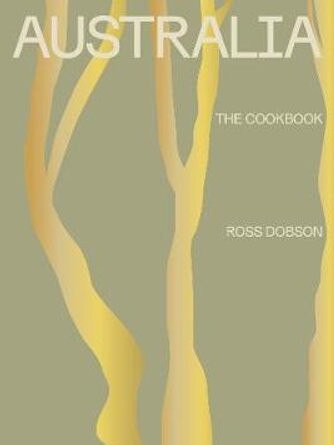How to define Australian cuisine?
Hedgehog Slice, Beer Can Chicken to a crackin’ Meat Pie. Not all of us have benefited from a parent or grandparent to hand down the quintessential Aussie recipes. This is a treasure trove of them.

You are invited to a nationalistic yet very inclusive dinner party. All courses will come from a new cookbook proudly proclaiming itself Australia The Cookbook. There will be a few old favourites and perhaps something new. As we’re gathering in that most Aussie of beaches – Bondi – all our ingredients will be sourced from local stores, shores, markets and gardens.
We’re not precious about food miles but do lap up a certain dietary parochialism.
Come as you are because this collection of wondrous warming dishes from our culinary past is anything but pretentious. On the contrary, the recipes positively celebrate our indigenous, colonial and migrant appetites and can be safely assembled by open-minded cooks of even limited experience. It’s not kitsch: there’s only one dish for “bouncy mouse”, and even that’s a Thai Kangaroo Salad. Camel and emu are absent.
There are surprises, such as Colonial Goose, which is actually lamb, as well as old favourites, including Dagwood Dogs and lasagne described as “one of the most-loved recipes to cook at home”. Of course, there may be arguments about that – even choosing this menu for your reading pleasure stirred up robust debates about what’s in, and what’s out of this lavishly produced but well-priced cookbook.
A warning for those who prefer to be gluten, dairy or meat-free: the contents of this book hark back to a time when taste and not trend were the consuming passions. A good half of the 431 pages are devoted to the delights of bread, buns, biscuits, slices in which Australia truly excels, lollies and sweets, cakes including Ginger Fluff and pastries, desserts, jams and sauces. Your dinner will include three of the above.
Calling it a mere recipe book short-changes the impressive research into 40,000-plus years of Australian agriculture and cuisine, accounts of which preface the actual “tucker” with excellent although uncaptioned landscape photos.
A glance through the handy index underlines the treasures which author Ross Dobson has unearthed from the archives. Not many cookbooks mention Sir Frank Packer (p226) but given his influence over The Australian Women’s Weekly and that magazine’s over the evolution of the national stomach, it’s a fair call.
But all this talk must be getting you hungry. So the general setting of tonight is Australia in the 1970s – besides the meal, we had a trivia quiz, appropriate music and matching wines from flagons and boxes.
Let’s move to the first course. Given the processed ingredients of the French Onion Dip – one packet of the said dried soup mix and one tub of sour cream – and the simplicity of the instructions (combine and serve) one might wonder why it’s in the book at all. Perhaps to stress how down-to-earth and straightforward an Australian menu can be. Served with a Jatz cracker, it proved a sensuous starter.
We followed with the Coconut and Curry Pumpkin Soup, which, as our author puts it, illustrates how “after a century of blandness, the Australian palate craved more complex flavour and spice”. A massive market-procured kent pumpkin was transformed into an Asian delight courtesy of little more than red Thai curry paste and a tin of coconut milk. The fragrant and foolproof damper recipe, my first made not under the stars, ensured every drop of soup was wiped away.
I planned next on the Colonial Goose, a Christmas favourite of homesick Poms who substituted geese, which were hard to get, with a leg of lamb stuffed kidney, sage and bacon. However the date being ahead of “Xmas in July” meant we instead served the Braised Lamb Shoulder with Creamed Parsnips and Cauliflower Cheese.

Some may argue straightforward classics like lamb roasts hardly deserve a place at the table of a national cookbook, while staples such as risottos are totally missing in action. Yet like self-proclaimed cineastes who’ve never seen Citizen Kane, foodies obsessed by innovation or foreign tastes often miss the point.
Not all of us have benefited from a parent or grandparent to hand down these kinds of family recipes, and Dobson has collected a treasure trove of them, especially those cakes. Gladly there’s much “multi-munchalism” among his collection and some distinctly Australian creations for which we should all be grateful. To name a few; Condensed Milk Salad Dressing, Lime Spiders, Hedgehog Slice, Beer Can Chicken and a crackin’ Meat Pie.
There’s a foreword on bush foods. In keeping with the intention to source locally, I’d loved to have caught some of the unfairly unloved mullet at Bondi to bake and serve with homemade pickled onions. They proved elusive. But warrigal greens grow wild on the coast and were, according to the book, Captain Cook’s first meal on the continent, accompanied by skate. Akin to English spinach, finding them involved fun and games. A Facebook appeal for information garnered many responses, although none had enough detail to find pickable or unraided sites.
On the dinner day, a local helped guide my wife to a very public part of the beach where the greens prosper in their anonymity and the salty sunshine. She returned with a large bucket load which were stir-fried with garlic, ginger and oyster sauce. They were a hit, and cost not a zac.
Dessert was Poached Quince, the earliest recipes here appear in the 1880s, and Sago Pudding which the author says “in all its comforting glory encapsulates food of times gone by”.
The same could be said of some but by no means all of the contents of Australia The Cookbook, which I intend to spend many happy years exploring. It will have pride of place in my kitchen, alongside Stephanie Alexander’s classic cookbook, to be splashed, shared and sampled.
People used to come from around the world to explore the curiosities and wonders of Australia. Hopefully one day, friends and family living abroad will be back. This significant volume will be my definitive guidebook, as well as the gift I’ll give visitors, to further their understanding and digesting of this genuinely national cuisine. At the end of the night, my guests were delighted, informed and satisfactorily sated and I hope you will be too.
Christopher Zinn is a consumer campaigner and an enthusiastic home cook who likes to turn inexpensive ingredients into impressive meals. The cost for this dinner for seven was $56 (not including the ‘70s cask wine; the lamb was near end-date and 50 per cent off at Harris Farm)
Australia The Cookbook
Phaidon
432pp, $47 (HB)



To join the conversation, please log in. Don't have an account? Register
Join the conversation, you are commenting as Logout